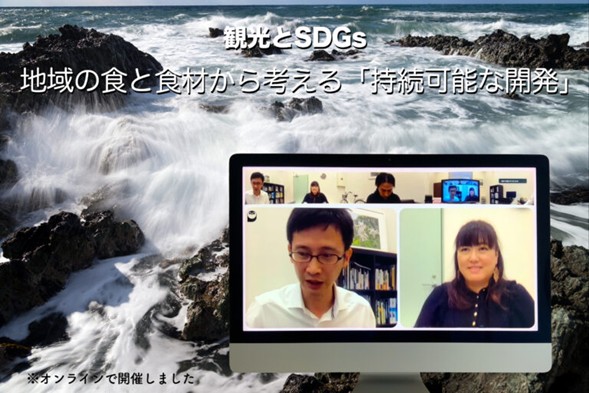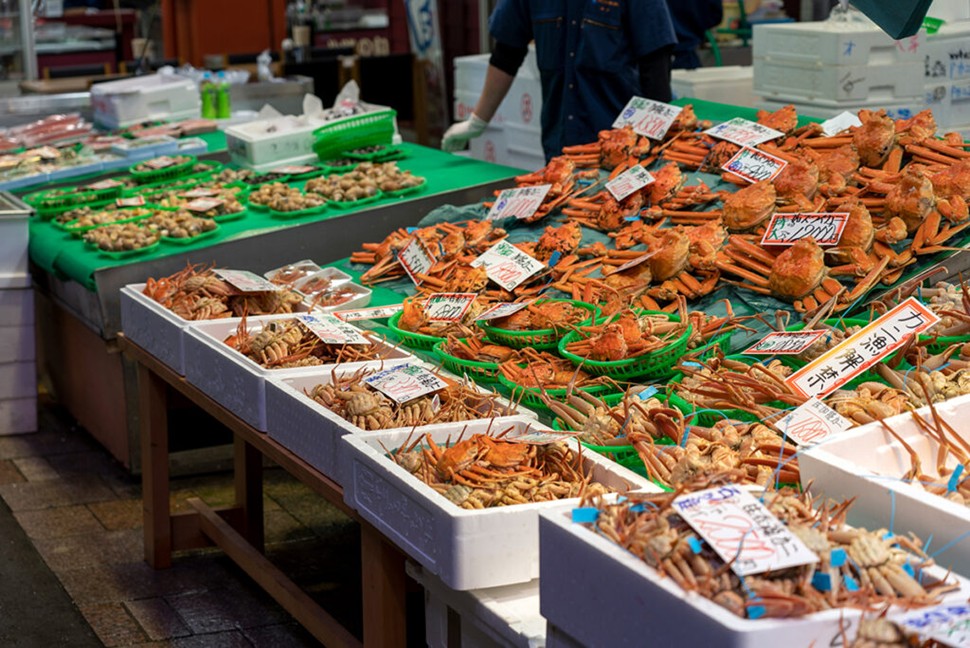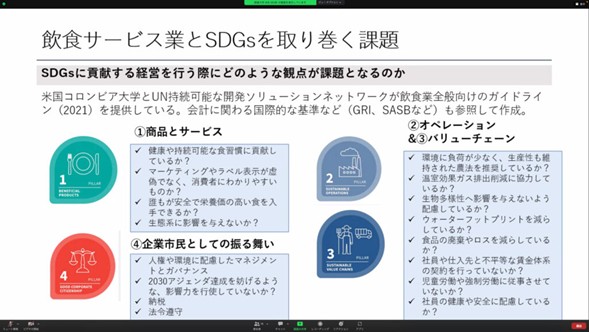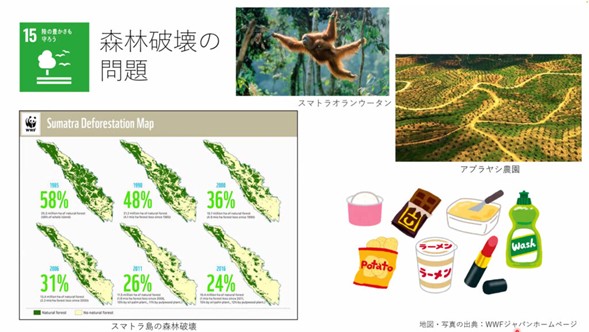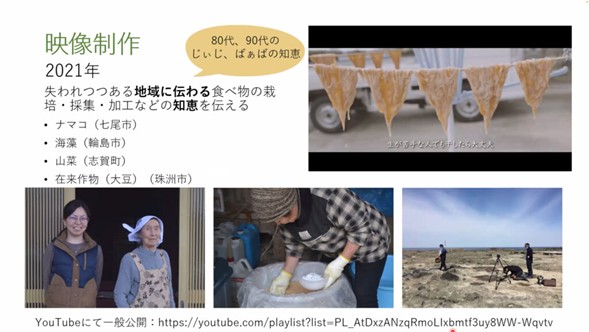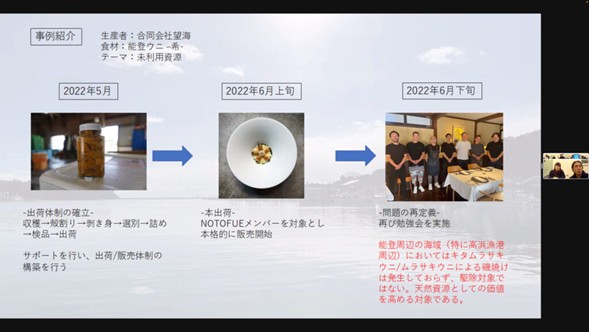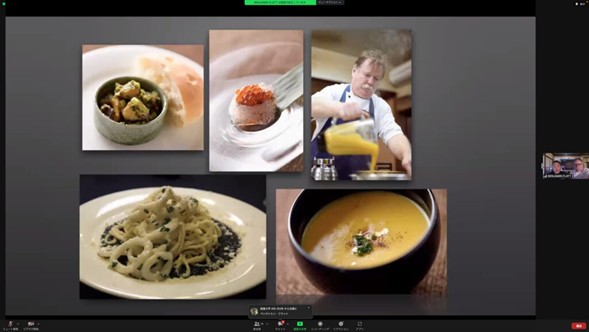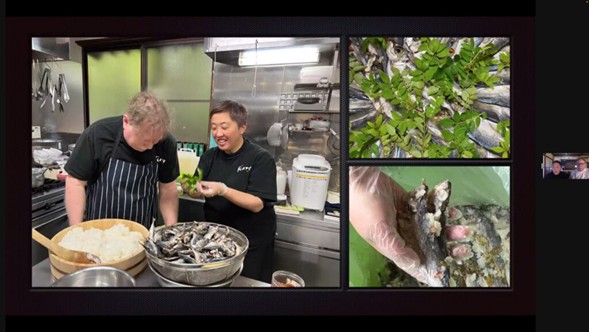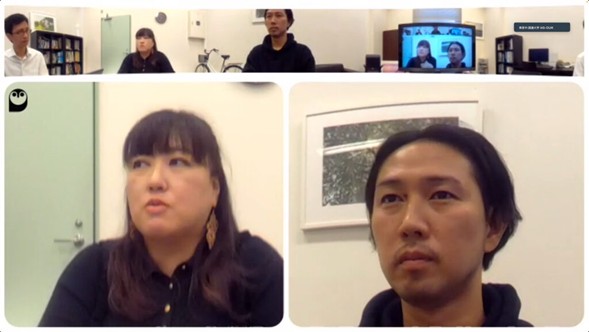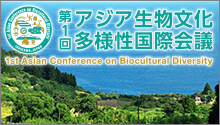One of the key purposes of travel is “food.”
Ishikawa Prefecture is home to an abundance of ingredients nurtured by its rich natural resources from both the sea and land. The Kaga region has developed a unique culinary culture that evolved during the Edo period, influenced by both samurai and commoners, while the Noto region has its own distinctive food culture shaped by its harsh natural environment and vibrant festival traditions. Many domestic and international travelers visit Ishikawa specifically to enjoy this delightful “food.”
However, alongside this appealing culinary heritage, there are numerous challenges such as the preservation of these traditions, a lack of successors among producers, and food waste. In the third installment of this seminar, we learned about efforts and challenges to achieve more sustainable tourism through discussions with chefs and culinary researchers, all centered around the theme of food.
An everyday food issue that impacts the entire planet
To begin, Yuya Tsuda, a researcher at OUIK, introduced the topic ” Food Tourism and the SDGs”. He presented examples of domestic and international tourism related to food. It was noted that “Japanese cuisine” is registered as a UNESCO Intangible Cultural Heritage and that it is said to contribute to the UN’s Sustainable Development Goals, specifically Goals 2, 4, and 12.
Next, Sayako Koyama, a researcher at OUIK, gave a lecture titled “The Connection Between Food and the SDGs & Introduction to OUIK’s Initiatives.” She presented several critical issues: more than 60% of food in Japan is dependent on imports, 6.46 million tons of food are wasted annually, the sustainable fish stock is continuously decreasing due to overfishing, and the increasing deforestation of tropical rainforests to produce palm oil—an ingredient used in many food products—is leading to a loss of rich biodiversity in other countries. These points emphasized the close connection between food issues and our daily lives.
On the other hand, it was mentioned that Ishikawa Prefecture has many positive aspects that can contribute to the SDGs. An example of this is the world agricultural heritage known as “Noto’s Satoyama Satoumi.” In Noto, there is a tradition of producing food locally and effectively utilizing that food, which is closely related to the SDGs. The richness of both land and sea not only helps to reduce carbon dioxide emissions by minimizing the transportation of ingredients from far away but also contributes to climate change mitigation. We must also not forget the existence of traditional wisdom that allows for the long-term preservation of harvested goods, such as through fermentation, without the use of electricity, thereby reducing waste.
The wisdom of growing and utilizing food, eating without waste, and having a heart of gratitude is essential knowledge for addressing various global challenges. Koyama emphasized that it is very important to pass these teachings on to the next generation of children and to share them with the world.
As part of the initiatives by the UNU-IAS OUIK, we have created a video and a picture book titled “Let’s Make a Harvest Feast!” to convey the richness of agriculture, nature, and culture in Noto to children. Additionally, many individuals who know the traditional knowledge are the elderly, so we believe we can contribute to the preservation of local knowledge by documenting it in videos and sharing them on YouTube. Please here to watch them.
Guest speakers presented their individual case studies
Naoko Taniguchi, a director at Kohaku Co., Ltd., is a culinary researcher and food coordinator who is actively engaged in sharing Kanazawa’s culture and regional food heritage through experiential cooking programs for inbound visitors. She collaborates with university students on initiatives to preserve and promote local culinary traditions. Additionally, she has a close relationship with Omicho Market, where she implements food education programs like the “Parent-Child Omicho Experience.” She also manages the gourmet e-commerce site “Ichiba no Hako,” which features local delicacies, working alongside market vendors to encourage more people to visit Kanazawa.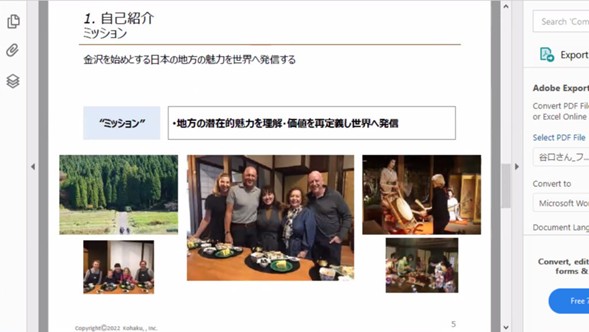
In the 2021 Michelin Guide for Hokuriku, Chef Umetaro from “respiración” in Kanazawa received two stars and a Green Star, highlighting the richness of regional ingredients. He shared some pressing issues, such as overfishing, the aging of local farmers, and a lack of successors, which has led to a decline in the care for the satoyama and its ecosystems. He pointed out that without successors, not only does food production diminish, but the traditional skills passed down through generations are also lost, along with the culture of the area. Reflecting on the question, “What can chefs do?” he partnered with like-minded chefs in Ishikawa Prefecture to establish the general incorporated association NOTOFUE. Their initiatives include utilizing underused fish, such as types of sea urchin previously targeted for culling, and working to connect the environment and resources of Noto’s satoyama and satoumi to future generations.
Benjamin Flatt, the owner-chef of “Noto Italian and Fermented Food Inn Furatto,” and his wife, Tomoko Funashita, shared some insights into the food culture of Noto. They explained that the practice of fermenting fish has existed for over a thousand years, with fermentation and aging occurring naturally without any temperature or humidity control. They described it as “fermentation being an incredible bundle of wisdom,” noting that the food often tastes even better than when it was initially marinated.
They also highlighted the unique use of rice bran, a byproduct of rice, which is rare in other parts of the world. This method not only enhances the flavor but also increases the nutritional value, making it an all-around beneficial practice. They believe that by incorporating such fermented foods into the next generation’s diet, they can contribute to the sustainability of Noto.
Additionally, he mentioned the reasons why fermented foods are still prevalent in Noto. First, the region boasts an abundance of seafood. Second, due to limited transportation development, Noto had to rely on local production and consumption. Third, the climate, with its hot summers and cold winters, allows for the repetition of fermentation and aging processes. Fourth, the local food culture is closely intertwined with traditions and festivals, resulting in the preservation of culinary practices alongside the culture. He stated that in order to pass on the food culture to the next generation, it is essential to promote sustainable tourism that is aligned with the current conditions of the region. However, a significant challenge lies in how to enhance the recognition of the value of the culture and traditions held by the local residents who welcome visitors.
The challenges related to food and tourism were discussed In the panel session
Next, the four guest speakers and Researcher Tsuda began a discussion that explored further the earlier examples.
Ms. Taniguchi focused on Omicho Market, which has seen an increase in both domestic and international visitors, analyzing it from the perspective of the SDGs. This market, with a history of 300 years, provides a clear insight into food culture. Visitors can engage with knowledgeable vendors and experience the changing seasons through fresh seasonal ingredients, making it a unique place where both locals and tourists can purchase the same items as professional chefs. However, Mr. Taniguchi noted some challenges facing Omicho Market, particularly the lack of successors to continue the tradition. Additionally, many fresh fish shops close on Wednesdays, leading to an increase in items that need to be discarded on Tuesdays. To tackle this issue, Ms. Taniguchi is working to sell these products through e-commerce platforms to reduce waste.
She also mentioned a lesser-known initiative in Kanazawa City that collects leftover fish from Omicho Market and processes it into fertilizer. This fertilizer is then used to grow vegetables, creating a sustainable cycle that she hopes more people will learn about. To raise awareness of how this market operates in a circular manner, she has launched the “Ichiba Basket Project.”
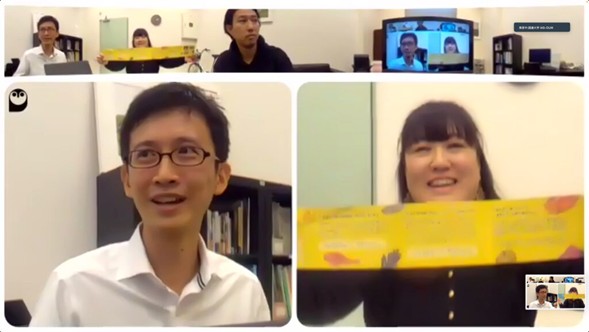
Mr. Flatt talked about the differences in values between Noto and his home country, Australia. Ms. Funashita discussed why it’s important to pass down Noto’s traditional skills to the next generation and mentioned some challenges, giving more specific examples.
Mr. Ume rovided an explanation about how local food ingredients are offered due to the management of Satoyama and Satoumi by human hands.
After that, participants discussed effective ways to pass down knowledge to future generations. They split into two groups for a workshop to share more ideas before wrapping up the seminar.
The speakers at this event all do unique work related to SDGs (Sustainable Development Goals) and tourism, especially in the food area. We hope that by using local shops and accommodations, participants will learn how to combine food and SDGs in their activities.


